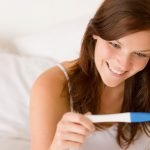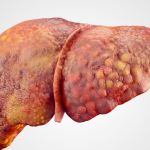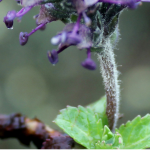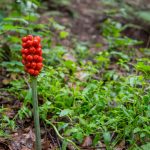Breast Implants & Autoimmunity: Connecting Silicone Implants with Immune Dysregulation
Student Scholarship – Second Place Research Review
Stephanie Berg, ND
Baljit Khamba, ND, MPH
Sabrina Koperski, ND
In July 2018, J.A., a 54-year-old Caucasian female, presented to the Bastyr University Clinic in San Diego, CA, seeking naturopathic treatment for diagnoses of ankylosing spondylitis and Hashimoto’s thyroiditis. Since April 2017, she had been experiencing severe pain in her left hip and legs that woke her up from sleep every few hours during the night. She described the pain as stabbing, “10 out of 10” in severity, starting in her hip joints, especially her left hip, and shooting down the lateral side of her thighs. She also had pain in her upper back and knees. A year later, she was diagnosed with ankylosing spondylitis, a chronic auto-inflammatory arthritis of the spine and sacroiliac joints that is part of a heterogeneous group of arthritides within the rheumatic diseases known formerly as the seronegative spondyloarthropathies, but now frequently referred to as spondyloarthritides.1 Notably, J.A. claimed that her health “went downhill” after breast augmentation with silicone implants, and she attributed her ankylosing spondylitis to this event.
J.A.’s Experience with Breast Implants
At age 31, J.A. had saline breast implants placed. She kept them for 20 years until age 51, in 2015, when one of them ruptured. As a result, she had both replaced, this time using silicone implants. She said she then began experiencing extremely dry mouth and eyes and pronounced fatigue. She had a history of hypothyroidism (diagnosed in her late 20s) and attributed the fatigue to this. In April 2017, 2 years after placement of the silicone implants, the severe hip and leg pain began. In December 2017, an MRI revealed osteoarthritis of her left hip, and in April 2018 she was diagnosed with Hashimoto’s thyroiditis, based on elevated anti-thyroglobulin and anti-thyroid peroxidase antibodies. At this time she was also diagnosed with ankylosing spondylitis, based on a combination of a positive human leukocyte antigen (HLA)-B27 genotype along with the MRI results. Attributing her health issues since 2015 to the silicone implants, she subsequently had them surgically removed in May 2018. However, the severe pain in her hips and legs persisted. In July, she sought naturopathic care at Bastyr University Clinic.
Although the cause of ankylosing spondylitis is unknown, individuals with the diagnosis frequently carry the gene for HLA-B27.1 It is thus believed that the underlying autoimmune/auto-inflammatory dysregulation results from a combination of environmental mediators in the setting of genetic predisposition.1 While J.A.’s history is complicated by multiple factors that make a direct causal link unclear, she did have a genetic predisposition to the disease with her HLA-B27 genotype, a family history significant for a brother with a diagnosis of another seronegative spondyloarthropathy (psoriatic arthritis), and a personal history of autoimmune dysregulation as evidenced by Hashimoto’s thyroiditis. While her hypothyroidism, diagnosed 3 years prior to her saline implants, may have always been autoimmune in nature (and thus her thyroid autoantibodies cannot be causally linked to her implants), it is hypothetically possible they were triggered by them. Despite her genetic predispositions, it seems she remained mostly asymptomatic until the saline implant rupture and silicone implant placement. While it is also certainly possible that the saline implant rupture was contributory, the research to support this is scarce. This prompted a review of the research to assess the hypothesis that silicone breast implants played a contributory role in triggering symptomatic ankylosing spondylitis in this previously non-symptomatic woman with an HLA-B27 genotype.
Review of the Literature
Silicone implants have been used for reconstructive breast surgery since the 1960s2; however, they have a controversial history clouded by lawsuits2 and a growing body of research from the past 2 decades linking them with subsequent autoimmune-related complications, collectively known as autoimmune/inflammatory syndrome induced by adjuvant (ASIA).3-9 A handful of such studies are described here, and additional research is noted by Goren et al3 in their 2015 review of the literature. Based on this research, it is clear that silicone may be considered an adjuvant to the immune system and may induce an “adjuvant disease,” an immunologically mediated disorder manifested by arthritis, arthralgia, skin lesions, malaise, pyrexia, and weight loss, clinically often resembling rheumatoid arthritis and Reiter’s syndrome.3
In 1993, based on anecdotal reports of associations between silicone implants and an increased incidence of autoimmune disease, as well as data showing silicone-immune interactions, Teuber et al4 hypothesized that an immune response to silicone breast implants would also cause reactivity against components of the host microenvironment surrounding the implant. To test this hypothesis, they obtained detailed histories and performed examinations on 46 self-referred patients concerned about their silicone breast implants, as well as 45 women of approximately the same age and living in the same geographic region who did not have implants. All the women were tested for the presence of autoantibodies to human native type I and II collagen. Using stringent criteria, only defining positive presence of autoantibodies as an ELISA value of 3 standard deviations (SDs) above the mean of the control group, they found a statistically significant incidence of antibodies to collagen in women with silicone implants. Thirty-five percent of the women with silicone implants had such antibodies. Teuber et al concluded that silicone breast implants, in genetically susceptible hosts, may pose a significant risk for immunopathology.4
In 1995, Naim et al5 published their study examining the potential of silicone gel, such as that in silicone gel-filled breast implants, to cause arthritis. One group of Dark Agouti (DA) rats bred to be highly susceptible to developing arthritis were injected with silicone gel and another group of the highly susceptible DA rats were injected with non-silicone placebo gel. Anti-collagen II antibodies were formed in most of the rats injected with silicone gel but not in the rats injected with placebo gel. Thus, they concluded that silicone gel from a commercial breast implant is a potent humoral adjuvant capable of inducing autoantibodies and mediating collagen-induced arthritis in the DA rat, and they called for further investigation of the safety of silicone gel implants using clinical data from a population of women previously exposed to silicone gel either by implant rupture or free injection.5
Also in 1995, Bar-Meir et al6 published research that further investigated immunologic abnormalities in women with silicone breast implants. They analyzed 20 autoantibodies in blood serum of 250 women, ranging in age from 26 to 66 years old, 116 with silicone implants and 134 controls without implants. Those with silicone implants had the implants in place for a mean of 15±5.6 years, with a range of 4 to 30 years. The chief complaints of the 116 patients with implants included polyarthralgias, fatigue, myalgia, morning stiffness, and decreased memory. All 250 serum samples were tested blindly using a panel of 20 autoantigens, including SS-A, SS-B, RNP, cardiolipin (CL), collagen types I, II and IV, phosphatidylserine (PS), myeloperoxidase (MPO), sulfatides (sulf), thyroglobulin (TG), gangliosides (GD1a; GM2), proteinase-3 (PR3), Jo-1, Sm, HPRPP-ribosomal phosphate, histones (H2AH2B), Scl-70 and glomerular basement membrane (NC-1). Values from individual patients were considered positive only when they were greater than 3 SDs above the control mean. They found a statistically significant greater frequency of autoantibodies in women with implants for 15 of the 20 autoantigens; these were particularly greater for H2AH2B, HPRPP-ribosomal phosphate, SS-A, SS-B, Scl-70, CL, PS, GM2, and NC-1. Many of these patients harbored several autoantibodies, with 20% having 4 autoantibodies. The researchers concluded that silicone and silicone byproducts have an adjuvant action on the immune system. Interestingly, only a small number of the women had a definitive diagnosis of an autoimmune disease, which the authors suggested could be explained by the relatively short follow-up time or by the fact that autoantibodies produced as a result of exposure to silicone gel may not always conclusively portend autoimmune disease. Nonetheless, they noted that the data were of concern, and while the question of why some women develop autoantibodies or overt autoimmune disease following exposure to silicone remained unresolved, it is likely due to individual factors, such as a specific genetic predisposition towards autoantibody production, and perhaps the presence of significant inflammation around the implant.6
In 2000, O’Hanlon et al7 published research assessing the ability of silicone breast implants to induce formation of an inflammatory fibrovascular capsule not only in the area around the implants but also in other remote tissues of the body. Utilizing a combination of TCR β-chain CDR3 spectratyping and DNA sequence analysis, they assessed T-cells infiltrating both the silicone implant capsules and remote inflammatory tissues of the same women. Their analysis of 22 distinct gene families from the T-cells revealed some with the same gene transcripts in both the silicone implant capsules and capsules of other inflammatory tissues. DNA sequence analysis of these shared fragments confirmed that transcripts isolated from silicone capsules and multiple extracapsular tissues often had identical amino acid sequences within a specific antigen-binding domain. They thus concluded that shared, antigen-driven T-cell responses to the implants may contribute not only to chronic inflammation in the silicone breast implant capsules, but also to systemic sites of tissue injury as well.
In 2004, based on multiple case reports discussing a connection between silicone breast implants and connective tissue diseases and rheumatoid symptoms, Wolfram et al analyzed the cellular and molecular composition of fibrous capsules removed from patients with silicone breast implants at various times after surgery for diagnostic purposes such as breast cancer relapse or to relieve painful constrictive fibrosis.8 Frozen sections of capsule tissue were immunohistochemically stained for subsets of lymphocytes, macrophages, dendritic cells, fibroblasts, smooth muscle cells, collagenous and non-collagenous extracellular matrix proteins such as fibronectin, heat shock proteins, and adhesion molecules. They found massive deposition of fibronectin adjacent to the implant surface and that the capsule-silicone implant contact zone was consistently characterized by cell accumulation of heat shock proteins, macrophages, fibroblasts, and mononuclear cell infiltrates consisting of activated CD4+ T-cells. Notably, many dendritic cells were also found in the capsule just next to the silicone implant. The surface of the endothelial cells in the vasculature of the capsules was also positive for substantial numbers of P-selectin cell adhesion molecules. Given this indication of significant immune activation, they concluded that silicone induces a strong local T-cell-mediated immune response.8
Continuing Research
Since then, multiple case reports and case series have emerged describing autoimmune-related conditions in women following silicone implant breast augmentation, including systemic sclerosis, rheumatoid arthritis, Sjogren’s syndrome, systemic lupus erythematosus, and Still’s disease, as well as undifferentiated connective tissues diseases.3,9 And human studies continue to be undertaken. For example, aware of the prior research, in 2013, Cohen Tervaert et al9 published their analysis of the impact of silicone breast implants on the immune system in 32 consecutive patients attending a specialized autoimmunity clinic. All 32 patients had complaints fulfilling the diagnostic criteria of ASIA. Seventeen of the 32 patients had a diagnosis of a systemic autoimmune disease, and the other 15 were found to have an impaired humoral immune system. All 32 patients first developed symptoms and signs after implant aging and/or rupture.
Conclusion
When taking into account the multiple studies, it appears very likely that a causal relationship between silicone breast implants and autoimmune conditions – particularly those that are rheumatic in nature – has clinical relevance. Based upon this research, it seems that silicone and/or other substances used in the manufacturing process of silicone implants, or perhaps biofilms on the implants, have the potential to elicit a strong immune response that can result in symptomatic immune dysregulation, particularly in genetically susceptible individuals.
While studies dating back to the early 1990s have found a correlation between silicone gel implants and autoimmune markers, and a growing number of case reports continue to note such an association, the implants continue to be used today. The evidence (both clinical and laboratory based) of this association indicates a need for further study of the safety of silicone implants, particularly in genetically predisposed individuals, as well as more thorough screening and inquiry into the genetic and immunological susceptibility of patients prior to silicone implant breast augmentation. Potential implant candidates should receive full informed consent about the potentially life-altering consequences of their choice. Additionally, this information provides another avenue of investigation for clinicians treating individuals with autoimmune conditions who have silicone implants.
References:
- Yu DT, van Tubergen A. Diagnosis and differential diagnosis of axial spondyloarthritis (ankylosing spondylitis and nonradiographic axial spondyloarthritis) in adults. Last updated March 22, 2018. UpToDate Website. https://tinyurl.com/y23tjvvu. Accessed July 25, 2018.
- Breast Implants on Trial: Breast Implant Chronology. PBS. Available at: https://www.pbs.org/wgbh/pages/frontline/implants/cron.html. Published in 1995. Updated January 19, 2009. Accessed September 12, 2018.
- Goren I, Segal G, Shoenfeld Y. Autoimmune/inflammatory syndrome induced by adjuvant (ASIA) evolution after silicone implants. Who is at risk? Clin Rheumatol. 2015;34(10):1661-1666.
- Teuber SS, Rowley MJ, Yoshida SH, et al. Anti-collagen autoantibodies are found in women with silicone breast implants. J Autoimmun. 1993;6(3):367-377.
- Naim JO, Ippolito KM, Lanzafame RJ, van Oss CJ. Induction of type II collagen arthritis in the DA rat using silicone gels and oils as adjuvant. J Autoimmun. 1995;8(5):751-761.
- Bar-Meir E, Teuber SS, Lin HC, Alosacie I, et al. Multiple autoantibodies in patients with silicone breast implants. J Autoimmun. 1995;8(2):267-277.
- O’Hanlon TP, Lawless OJ, Katzin WE, et al. Restricted and shared patterns of TCR β-chain gene expression in silicone breast implant capsules and remote sites of tissue inflammation. J Autoimmun. 2000;14(4):283-293.
- Wolfram D, Rainer C, Niedregger H, et al. Cellular and molecular composition of fibrous capsules formed around silicone breast implants with special focus on local immune reactions. J Autoimmun. 2004;23(1):81-91.
- Cohen Tervaert JW, Kappel RM. Silicone implant incompatibility syndrome (SIIS): a frequent cause of ASIA (Shoenfeld’s syndrome). Res. 2013;56(2-3):293-298.
 Stephanie Berg, ND, was a 4th-year naturopathic medical student at Bastyr University California when she wrote this article. Prior to attending Bastyr, she received a juris doctor degree from Stanford Law School and practiced business law for 6 years in Los Angeles, CA, until she discovered naturopathic medicine. Her interests include environmental medicine, women’s health and fertility, autoimmune disease, and chronic gastrointestinal issues. In her future practice, she hopes to continue spreading awareness about the importance of our environment in the health of current and future generations.
Stephanie Berg, ND, was a 4th-year naturopathic medical student at Bastyr University California when she wrote this article. Prior to attending Bastyr, she received a juris doctor degree from Stanford Law School and practiced business law for 6 years in Los Angeles, CA, until she discovered naturopathic medicine. Her interests include environmental medicine, women’s health and fertility, autoimmune disease, and chronic gastrointestinal issues. In her future practice, she hopes to continue spreading awareness about the importance of our environment in the health of current and future generations.
***
 Baljit Khamba, ND, MPH, is a licensed naturopathic doctor in California. She is also a clinic supervisor at Bastyr University Clinic and a core faculty member at Bastyr University CA. Dr Khamba completed her (honors) Bachelor of Science degree (specializing in psychology), as well as her Masters in Public Health degree, at York University in Toronto. She received her ND degree from CCNM, also in Toronto. She was also involved with research projects at the University of Alberta on natural health product safety. Dr Khamba is a member of the American Osteopathic Association of Prolotherapy Regenerative Medicine. Email: [email protected]
Baljit Khamba, ND, MPH, is a licensed naturopathic doctor in California. She is also a clinic supervisor at Bastyr University Clinic and a core faculty member at Bastyr University CA. Dr Khamba completed her (honors) Bachelor of Science degree (specializing in psychology), as well as her Masters in Public Health degree, at York University in Toronto. She received her ND degree from CCNM, also in Toronto. She was also involved with research projects at the University of Alberta on natural health product safety. Dr Khamba is a member of the American Osteopathic Association of Prolotherapy Regenerative Medicine. Email: [email protected]
***
 Sabrina Koperski, ND, is a clinic supervisor at Bastyr University Clinic and adjunct faculty member at Bastyr University, California (BUC). Prior to receiving her Doctorate of Naturopathic Medicine from BUC, Dr Koperski participated in research at UCSD, ranging from adverse events to Gulf War illness and autism. Following graduation, she completed her residency at BUC, with special emphasis in autoimmune disease. Dr Koperski is a licensed naturopathic doctor in CA and accepts patients at Bastyr University Clinic alongside student interns. She is also in private practice at The Center for Health and Wellbeing in San Diego, CA.
Sabrina Koperski, ND, is a clinic supervisor at Bastyr University Clinic and adjunct faculty member at Bastyr University, California (BUC). Prior to receiving her Doctorate of Naturopathic Medicine from BUC, Dr Koperski participated in research at UCSD, ranging from adverse events to Gulf War illness and autism. Following graduation, she completed her residency at BUC, with special emphasis in autoimmune disease. Dr Koperski is a licensed naturopathic doctor in CA and accepts patients at Bastyr University Clinic alongside student interns. She is also in private practice at The Center for Health and Wellbeing in San Diego, CA.









